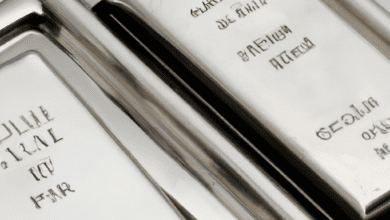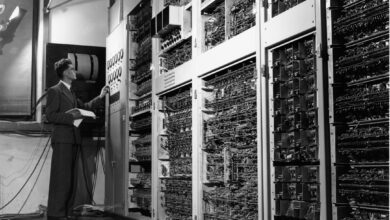The Economic Value of Metal Recycling: Transforming Precious and Base Metals for Sustainable Industries

As the world increasingly shifts towards sustainability, the economics of metal recycling has emerged as a critical focal point for both industries and investors alike. Metal recycling not only reduces the need for extensive metal mining but also transforms how we view the value of ferrous and non-ferrous metals in the global market. With the rising demand for precious metals like gold and platinum, alongside base metals such as aluminum and copper, understanding the economic impact of recycled metals is essential for navigating the landscape of metal commodities. This article delves into the intricacies of metal recycling, exploring how it influences market dynamics, the comparative benefits of recycling precious versus base metals, and its pivotal role in sustainable metal production for industries ranging from automotive to aerospace. By examining these factors, we aim to illuminate the path forward in metallurgy and metal fabrication, highlighting the relevance of recycled metals in constructing a sustainable future.
- 1. The Economic Impact of Metal Recycling: Understanding the Value of Ferrous and Non-Ferrous Metals
- 2. Precious Metals vs. Base Metals: A Comparative Analysis of Recycling’s Market Influence
- 3. Sustainable Metal Production: How Metal Recycling Shapes the Future of Industrial and Automotive Sectors
1. The Economic Impact of Metal Recycling: Understanding the Value of Ferrous and Non-Ferrous Metals
The economic impact of metal recycling is profound, influencing various sectors from manufacturing to construction. Understanding the value of ferrous and non-ferrous metals is essential for grasping the full spectrum of benefits associated with metal recycling.
Ferrous metals, which primarily include steel and iron, account for a significant portion of recycled materials. The recycling of these metals not only conserves natural resources but also reduces energy consumption involved in metal mining and production. For instance, recycling steel saves about 60% of the energy required to produce new steel from raw materials, making it a more sustainable choice for construction and automotive industries.
On the other hand, non-ferrous metals such as aluminum, copper, and zinc also hold substantial economic value. Aluminum, widely used in aerospace and automotive applications, can be recycled indefinitely without losing quality. This characteristic has made it a sought-after material, particularly in the context of sustainable metal production. The recycling of copper, a critical component in electrical wiring and plumbing, helps to meet increasing demand while minimizing environmental impacts.
Precious metals like gold, silver, platinum, and palladium are integral to both jewelry and industrial applications. The trend of gold investing and silver investing is increasingly linked to the recycling of these metals, as reclaimed materials provide a source of supply that can help stabilize prices. Rare earth metals, though not categorized as precious, are vital for high-tech applications and green technologies, making their recycling crucial in a fast-evolving market.
The economics of metal recycling also extend to base metals and metal alloys, which play a critical role in the production of various goods. As industries increasingly adopt circular economy principles, the demand for recycled metals is expected to rise. This shift is evident in sectors such as energy, where battery metals like lithium are becoming essential for renewable energy solutions and electric vehicles.
Additionally, the rise of 3D printing metals is opening new avenues for metal fabrication, leading to innovative uses of recycled metals. As manufacturers seek to reduce waste and improve efficiency, the integration of recycled materials into production processes becomes more prevalent.
In summary, the economic value and market impact of recycled metals are extensive. By promoting metal recycling, industries not only benefit from lower costs and resource conservation but also contribute to a more sustainable future. The intertwining of metal economics with trends in metallurgy, construction metals, and automotive metals underscores the importance of embracing recycling as a cornerstone of modern metal production and consumption.
2. Precious Metals vs. Base Metals: A Comparative Analysis of Recycling’s Market Influence
In the realm of metal recycling, the distinction between precious metals and base metals plays a crucial role in determining market dynamics and economic value. Precious metals, such as gold, silver, platinum, and palladium, are often regarded as safe-haven assets and are highly sought after for their intrinsic value and limited supply. Their recycling can significantly impact market prices, especially during economic fluctuations. For instance, gold investing tends to surge in uncertain times, driving up demand for recycled gold, which can help stabilize market prices.
On the other hand, base metals, including copper, aluminum, zinc, and steel, are essential for various industrial applications, from construction metals to automotive metals. The recycling of these industrial metals is vital for sustainable metal production, as it reduces the need for metal mining and lowers the environmental impact associated with extracting raw materials. The increased focus on sustainability has led to a rise in the recycling of base metals, particularly as industries seek to minimize waste and enhance metal fabrication processes.
Both precious and base metals have unique recycling trends and economic influences. Precious metals often see a direct correlation between recycling rates and global market demand, particularly in sectors such as jewelry metals and energy metals. Conversely, the recycling of base metals is more influenced by industrial demand and technological advancements, such as the rise of 3D printing metals and the need for battery metals in electric vehicles.
Rare earth metals, which are critical for various high-tech applications, also fall into this comparative analysis. Although not classified as precious or base metals, their recycling is becoming increasingly important in the context of sustainable practices and reducing reliance on primary extraction methods. As metallurgy continues to evolve, the economic implications of recycling both precious and base metals will shape the future of metal commodities and impact global supply chains.
In summary, the interplay between precious metals and base metals in the recycling market underscores the importance of understanding their distinct characteristics and market influences. As the demand for sustainable practices grows, the economic value of both categories will continue to play a pivotal role in shaping metal trends and driving innovation in the field of metallurgy.
3. Sustainable Metal Production: How Metal Recycling Shapes the Future of Industrial and Automotive Sectors
Sustainable metal production is increasingly becoming a focal point for industries aiming to reduce their environmental impact while maintaining economic viability. Metal recycling plays a critical role in this transformation, particularly in the industrial and automotive sectors. By recycling metals such as steel, aluminum, copper, and zinc, manufacturers can significantly lower their reliance on traditional metal mining, which is often associated with extensive environmental degradation.
The process of metal recycling not only conserves natural resources but also helps in the efficient use of energy. Recycling metals typically requires less energy than producing new metals from ore, which leads to lower greenhouse gas emissions. For instance, recycling aluminum saves about 95% of the energy needed to produce new aluminum from bauxite ore. This energy efficiency is becoming increasingly crucial as industries strive to meet stringent sustainability goals.
In the automotive sector, the shift towards sustainable metal production is evident in the growing use of recycled materials in vehicle manufacturing. Automotive metals, such as steel and aluminum, are being sourced from recycled metal commodities, reducing the need for virgin materials. This not only lowers costs but also aligns with the industry's commitment to sustainability. Furthermore, the integration of metal fabrication techniques, including 3D printing metals, allows for innovative designs while minimizing waste.
Similarly, in the industrial sector, the use of recycled ferrous and non-ferrous metals is revolutionizing production processes. The demand for base metals and rare earth metals is met more sustainably through recycling, which decreases the pressure on metal mining operations. This is especially important for metals used in high-tech applications, such as lithium in battery metals and platinum and palladium in catalytic converters. By investing in metal recycling, industries can secure a steady supply of these crucial materials while promoting sustainable practices.
Moreover, the jewelry and construction sectors are also benefiting from sustainable metal production. By utilizing recycled precious metals, such as gold and silver, jewelers can create products that are both environmentally friendly and ethically sourced. In construction, the use of recycled metals not only supports sustainability but also enhances the durability of materials, combating issues like metal corrosion.
As metal trends move toward sustainability, industries are recognizing the economic value of recycled metals. The market impact is profound, with recycled metals being increasingly viewed as viable alternatives to newly mined materials. This shift not only contributes to a circular economy but also positions businesses as leaders in sustainable practices, appealing to environmentally-conscious consumers and investors alike.
In conclusion, the future of sustainable metal production is bright, driven by the ongoing advancements in metal recycling. As sectors such as automotive and industrial continue to embrace recycled materials, the positive implications for the environment and the economy will only grow. The integration of metal recycling into everyday practices will shape the landscape of metallurgy and metal fabrication for years to come, encouraging further innovation and investment in sustainable solutions.
In conclusion, the economics of metal recycling play a pivotal role in shaping both the market dynamics of various metal commodities and the future of sustainable metal production. The economic impact of recycling ferrous and non-ferrous metals not only reduces dependency on metal mining but also enhances the value of precious metals, such as gold and platinum, while providing significant benefits to the industrial and automotive sectors. As we witness increasing demand for construction metals, aerospace metals, and battery metals, the importance of effective metal recycling strategies cannot be overstated.
Recycling not only promotes the efficient use of resources but also addresses environmental concerns associated with metal corrosion and waste. The comparative analysis of precious and base metals highlights the necessity for industries to adapt to the evolving landscape of metallurgy and metal fabrication, utilizing recycled materials to create high-quality metal alloys. Moreover, as trends such as 3D printing metals gain traction, the potential for innovative applications in energy and automotive metals becomes more apparent.
As we move forward, embracing metal recycling will be essential for fostering a circular economy that maximizes the economic value of metals while minimizing environmental impact. By investing in sustainable practices and technologies, we can ensure that the future of metal production is not only economically viable but also environmentally responsible.
References:
(Include relevant citations here)





